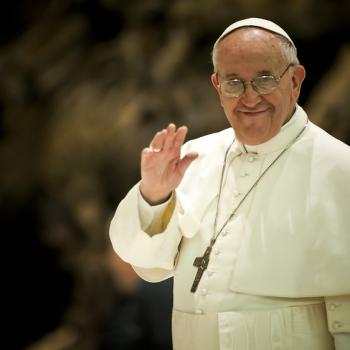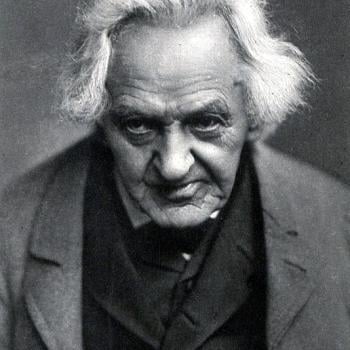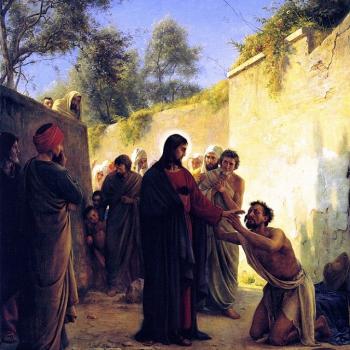
It seems to be fashionable now for reactionaries (with the utmost irony, for those familiar with their talking-points) to be “ambiguous” about their position as to the authority of Vatican II. Of course, it used to be taken for granted by all orthodox, tradition-accepting, observant, pious, devout Catholics, that an ecumenical council (in union with / ratified by a pope) carried sublime and binding authority. Not any more . . .
This ambiguity is seen in reactionary Taylor Marshall, author of the runaway reactionary bestseller, Infiltration. He tries (like a good postmodernist subjectivist) to play it both ways in his book: against Vatican II and also “for” it. He “talks out of both sides of his mouth.” And so I have encountered many of his followers (Marshallites, I call ’em) who will vociferously argue that he doesn’t reject Vatican II.
That’s quite odd, when one observes the theme over and over in book reviews on Amazon, of Vatican II-bashing, as I documented. This was certainly the impression that they (his devoted fans) had of the book. I have also shown (from his book) how Marshall is definitely against the Second Vatican Council, and regards it as modernist.
Lest anyone be confused (or deceived) about the general reactionary hostility against Vatican II among radical Catholic reactionaries, I offer this handy survey. You may not be aware of how far things have now degenerated. Even pope-bashers (but not reactionaries) like Phil Lawler (author of Lost Shepherd) have jumped on the bandwagon.
In an article dated 23 August 2017, Lawler the suggested the possibility of questioning Vatican II itself: not just a warped implementation of it by the so-called “progressive” dissidents. This is a second classic hallmark of the reactionary mindset. In particular, his recourse to “ambiguity” in VCII is right from the reactionary playbook. He wrote:
Did the problems that arose after Vatican II come solely because the Council’s teachings were ignored, or improperly applied? Or were there difficulties with the documents themselves? Were there enough ambiguities in the Council’s teaching to create confusion? If so, were the ambiguities intentional—the result of compromises by the Council fathers? . . .
More to the point, while it is certainly true that the “spirit of Vatican II” that is often cited in support of radical changes cannot be reconciled with the actual teachings of the Council, it is also true that the proponents of change can cite specific passages from Council documents in support of their plans. So are those passages being misinterpreted. Are they taken out of context? Or are there troublesome elements of the Council’s teaching, with which we should now grapple honestly? One thing is certain: we will not solve the problem by pretending that it does not exist.
The same is true of Ross Douthat, another pope-basher, and author of To Change the Church, whom I also don’t classify as a reactionary. He wrote in that book:
Conservative Catholics need to come to terms with certain essential failures of Vatican II. . . .
[A] major part of Vatican II’s mission was to equip the Church to evangelize the modern world, and that five decades is long enough to say that in this ambition the council mostly failed. . . .
This doesn’t mean the council was a failure in its entirety, or that arch-traditionalists are right to condemn it as heretical, or (as more moderate traditionalists would argue) that the council itself was primarily to blame for everything that followed. The experience of every other Christian confession suggests that some version of the same civil war and institutional crisis would have arrived with or without the council.
But we need to recognize, finally, that for all its future-oriented rhetoric, Vatican II’s clearest achievements were mostly backward-looking. [his italics, and my bolded emphases]
This shows that reactionary thinking is gradually creeping into even non-reactionary thought, among the pope-bashers, at any rate (whose numbers keep increasing). But once we get to the reactionaries, we see that it is outright disdain and “dissing” of the Council, in no uncertain terms (though usually not its technical validity, which is another game the reactionaries play — now classically expressed by Taylor Marshall — , so as to be “ambiguous” and have it both ways). I shall now take a look at four of the major reactionary venues and writers:
One Peter Five
1) The article, ” ‘Points of Rupture’ of the Second Vatican Council with the Tradition of the Church – A Synopsis” (4-13-18), by Paolo Pasqualucci (signer of three of the endless reactionary-dominated “corrections” of Pope Francis), is almost the Vatican II-bashers “Bible”. It lists 26 of these points and seeks to establish, over and over, that Vatican II is contrary to received Catholic tradition. Here are some typical examples (line breaks indicate separate excerpts):
The attribution of the same faith in Christ to all Christians, including those “separated” from the Catholic Church, improperly equates the Catholic faith with the faith of schismatics and heretics.
This is an entirely new definition, which seems to extend the concept of the Church of Christ to also include all the heretics and schismatics, thus exposing itself to the accusation of heresy in the formal sense, . . .
The same Constitution Dei Verbum seems to eliminate the usual distinction between Tradition and Scripture (DV 9-10).
The concept of Tradition is never expressly defined; its relationship with Scripture is not made clear (DV 9), . . .
The new definition of episcopal collegiality in LG 22 does not seem reconcilable with the Tradition of the Church and undermines the right understanding of the Primacy of the Roman Pontiff.
Such a concept appears not to conform to the doctrine of the Church and is a harbinger of indifferentism and agnosticism.
Etc, etc., ad nauseam.
2) Steve Skojec, the Grand Poobah and Head Honcho of this pathetic Church-bashing site, joins right in with his straightforward slop, “‘That’s Not Who We Are Anymore’: Pre- and Post-Conciliar Catholicism Are Not the Same Religion” (10-2-18). The title can’t make the view any more clear than it is, can it? And so he pontificates, citing equally radical Hilary White in agreement:
The fact that we don’t really yet have an official name for the New Paradigm (and probably won’t for another couple of centuries) has made it difficult to help clarify what I mean when I say that in effect, most regular novus ordo Mass-going Catholics don’t believe the same religious things as previous generations of Catholics believed. I’ve said it many times, and I’m not alone, that “Novusordoism isn’t Catholicism.” It’s become a bit of a catchphrase. I’ve also often used the term “New Paradigm” to refer to the creation of what is in essence, if not yet in name, the new thing created after Vatican II. I am gratified to see that the Pope’s closest collaborators are starting to promote this term themselves to describe it. Makes things easier.
How do we define it? We’ve talked about the “false floor” of the Novusordoist New Paradigm and the vast “lost city,” full of treasures, of the Catholic Faith that has been suppressed and buried since Vatican II that very very few Catholics know is down there.
3) David Martin writes in his article, “Was The Vatican II Revolution Real, Or Just a Misinterpretation?” (7-28-17):
It is often voiced by conservatives disheartened by the changes in the Catholic Church — changes that seem to have accelerated exponentially in recent years — that Vatican II was a good council, but that it was misinterpreted. If these good people were better informed as to what took place at the Council, they would never say any such thing. Vatican II indeed started with good intentions, but it was hijacked in the opening session by rebel bishops because the pope had planned the Council without their advice and against their designs. . . .
[T]he radical changes of today do not reflect a misinterpretation of Vatican II, but a true interpretation as intended by the liberal architects. The few good parts of the documents penned by the few good people were simply allowed and woven into the documents as religious cover to ensure the elicitation of Pope Paul’s signature, without which the progressivist plan would never succeed. To that end, it was more important to Vatican liberals that the documents appeared orthodox than liberal. . . .
Some still argue that the Vatican II documents contain no error but are simply ambiguous in their wording, but their argument hangs them, because ambiguity is the smoking gun of the devil and is the clearest evidence that the documents are jinxed. God is never ambiguous, but is always clear, direct, and juridical, so distorted documents which ‘speaketh out of two sides of the mouth’ are a dead give-away that God is not the Author thereof. . . .
Considering the notably unorthodox human dimension in drafting and approving the conciliar documents, how confident can we be that the council, on the whole, was a work of the Holy Spirit?
4) Brian Williams offers us the instant classic: “Time to Let Go of Vatican II” (2-2-18):
A growing number of the faithful have indeed moved on from post-conciliarism. Among many Catholics, particularly the young, the sentiment and conclusions of Fr. Hugh are being realized. Our point of reference and foundation is the Church’s history and tradition, not simply the most recent Council in the history of the Church.
The Remnant
1) Roberto de Mattei opines in “Church in Crisis: The Final Act of Vatican II” (1-5-19):
The essence of the Second Vatican Council was the triumph of pastoral theology over doctrine, the transformation of pastoral theology into a theology of praxis, the application of the philosophy of Marxist practice to the life of the Church. For the Communists, the true philosopher is not Karl Marx, the Revolution’s theorist, but Lenin who carried out the Revolution, proving Marx’s thought. For Neo-Modernists, the true theologian is not Karl Rahner, the principal ideologue of the revolution in the Church, but Pope Francis, who is fulfilling this revolution, putting Rahner’s thought into pastoral practice. There is no rupture, therefore, between the Second Vatican Council and Pope Francis, but historical continuity. Pope Francis represents Vatican II in action.
2) Robert Emmett Henry offers us the inestimable spiritual riches of “FORGET FRANCIS: Pope John Paul, the New Rosary, and the Revolutionary Tactics of Modernism” (11-28-18; originally 10-15-02):
Imperial Wizard of The Remnant Michael Matt penned the Introduction:
For the many “new recruits” to Tradition here in 2018, this article will be useful since it helps to place Pope Francis into the proper Modernist context of the Revolution of Vatican II. . . .
[T]he following article fits rather nicely into the Remnant’s larger effort to “get back to basics”, and to connect the dots from Francis to the Revolution of Vatican II for which he is the perfect, if unwitting, poster boy. Because, again, Francis isn’t the fundamental problem so much as its inevitable consequence. We’ve got to stop behaving as if what’s going on in Rome today is something new, because it’s not! We have to be honest about what led up to the Francis crisis, . . .
If you’re new to Tradition, this article may be challenging. But I encourage you to open your mind to the reality that Francis really is nothing more than the last straw. At best, he’s the cleanup batter, the bases having been loaded long before this befuddled old Modernist ever slouched into the batter’s box.
Henry himself takes potshots at “the Vatican II system of infantile rebellion against Church traditions”.
Rorate Caeli
1) Fr. Pio Pace pontificates in his screed, “Paul VI: a ‘Pastoral’ canonization?” (10-13-18):
Perhaps Paul VI had remarkable and heroic virtues in his private and secret life. But, as Pope, he is the object of not little debate: he promulgated the most liberal texts of the Council (Gaudium et Spes, Unitatis Redintegratio, Nostra Aetate, Dignitatis Humanae); he led a liturgical reform that turned sacred liturgy upside down and inside out; and several other things, big and small, . . .
Paul VI fully embodies Vatican II. It is precisely for this reason that he has been chosen for canonization, as the Popes of the Council and post-Council, who have been canonized one after the other: John XXIII, John Paul II…
We must dare say it: by canonizing all Vatican II popes, it is Vatican II that is canonized. But, likewise, canonization itself is devalued when it becomes a sort of medal thrown on top of a casket. Maybe a council that was “pastoral” and not dogmatic is deserving of canonizations that are “pastoral” and not dogmatic.
LifeSite News
1) In “Why rebellion against Humanae Vitae is tied to Vatican II’s unclear teaching” (11-5-18), Fr. Serafino M. Lanzetta states:
The post-conciliar confusion and rebellion against Humanae Vitae are tied – although indirectly – to the magisterial uncertainty of Vatican II, especially in Gaudium et Spes. One cannot simply put the blame on the contrasting hermeneutics born during the receptive phase of the Council. It was the Council itself, with its doctrinal ambiguity on various points, that created the hermeneutical problem. From the very outset of the Council, the Fathers with their theologians faced such a problem.
***
My Defenses of Vatican II:
Vatican II Defended Against Reactionary (and Some Traditionalist) Charges [4-25-14; expanded and re-edited: 1-23-17]
Apologia for Vatican II / Misguided Reactionary Criticisms [8-17-15]
*
“Novelties” of Vatican II (Religious Liberty & Ecumenism)? [2-10-17]
*
***
Photo credit: niekverlaan (8-19-14) [Pixabay / Pixabay License]
***












